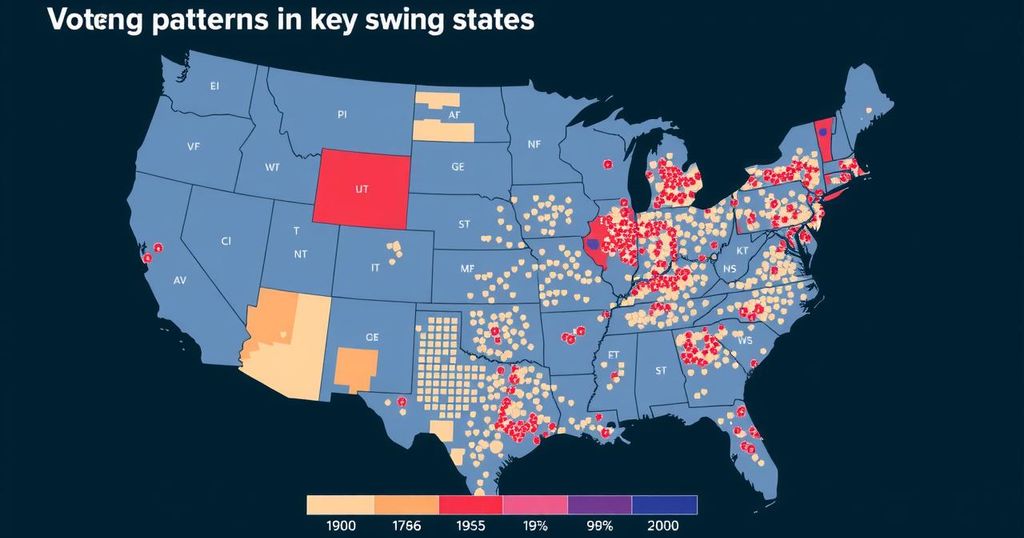The article analyzes how seven critical swing states—Arizona, Georgia, Michigan, North Carolina, Nevada, Pennsylvania, and Wisconsin—have historically voted, focusing on their electoral shifts over the years. It highlights significant changes, particularly in the 2016 and 2020 elections, reflecting their importance in determining presidential outcomes. These states serve as battlegrounds, indicating the dynamic nature of voter preferences in the U.S.
The outcome of the U.S. presidential election pivots significantly on the results from seven key swing states: Arizona, Georgia, Michigan, North Carolina, Nevada, Pennsylvania, and Wisconsin. In the context of the 2020 elections, these states exhibited varying historical trends, with some traditionally leaning Republican, while others have shifted more recently towards Democratic candidates. Current election contests are particularly intense in these regions, showcasing a divided voter base among competing parties. The focus on swing states is a longstanding aspect of U.S. elections, often determining the eventual victor. Historically, Arizona was predominantly a Republican stronghold until Joe Biden won it in 2020 by a narrow margin of 0.3 percentage points. Georgia similarly transitioned from Republican to Democratic in the 2020 election, with Biden edging out by just 0.2 percentage points. Meanwhile, North Carolina has maintained a predominantly Republican leaning, although recent margins indicate a competitive electorate. Nevada’s results have varied significantly yet leaned Democratic since 2008, while Pennsylvania remains a crucial battleground having voted Democratic consistently until Trump’s 2016 victory. In contrast, Michigan and Wisconsin, which were reliably Democratic for decades, witnessed shifts with Trump’s wins in 2016. Both states, however, returned to the Democratic fold with Biden’s narrow victories in 2020. The intense voter engagement in these states underscores their pivotal roles in the electoral landscape, reflecting the dynamic and often unpredictable nature of U.S. polls.
The significance of swing states in U.S. elections is well recognized, as their electoral votes can decisively influence the outcome of presidential races. Historically, these are states where both Democratic and Republican candidates have relatively equal support, making them critical targets for campaigns. The article explores the past voting trends in seven such swing states to illustrate their electoral behavior over several election cycles and how these trends can evolve over time, particularly in light of recent political shifts and demographic changes.
The assessment of historical voting patterns in the seven pivotal swing states reveals a complex electoral landscape where traditional party allegiances are increasingly challenged. The outcomes of elections in Arizona, Georgia, North Carolina, Nevada, Pennsylvania, Michigan, and Wisconsin remain uncertain and subject to change, as campaigns intensify efforts to secure these crucial states. Understanding these trends provides context for the ongoing electoral process and the likelihood of surprises on Election Day.
Original Source: www.aljazeera.com






